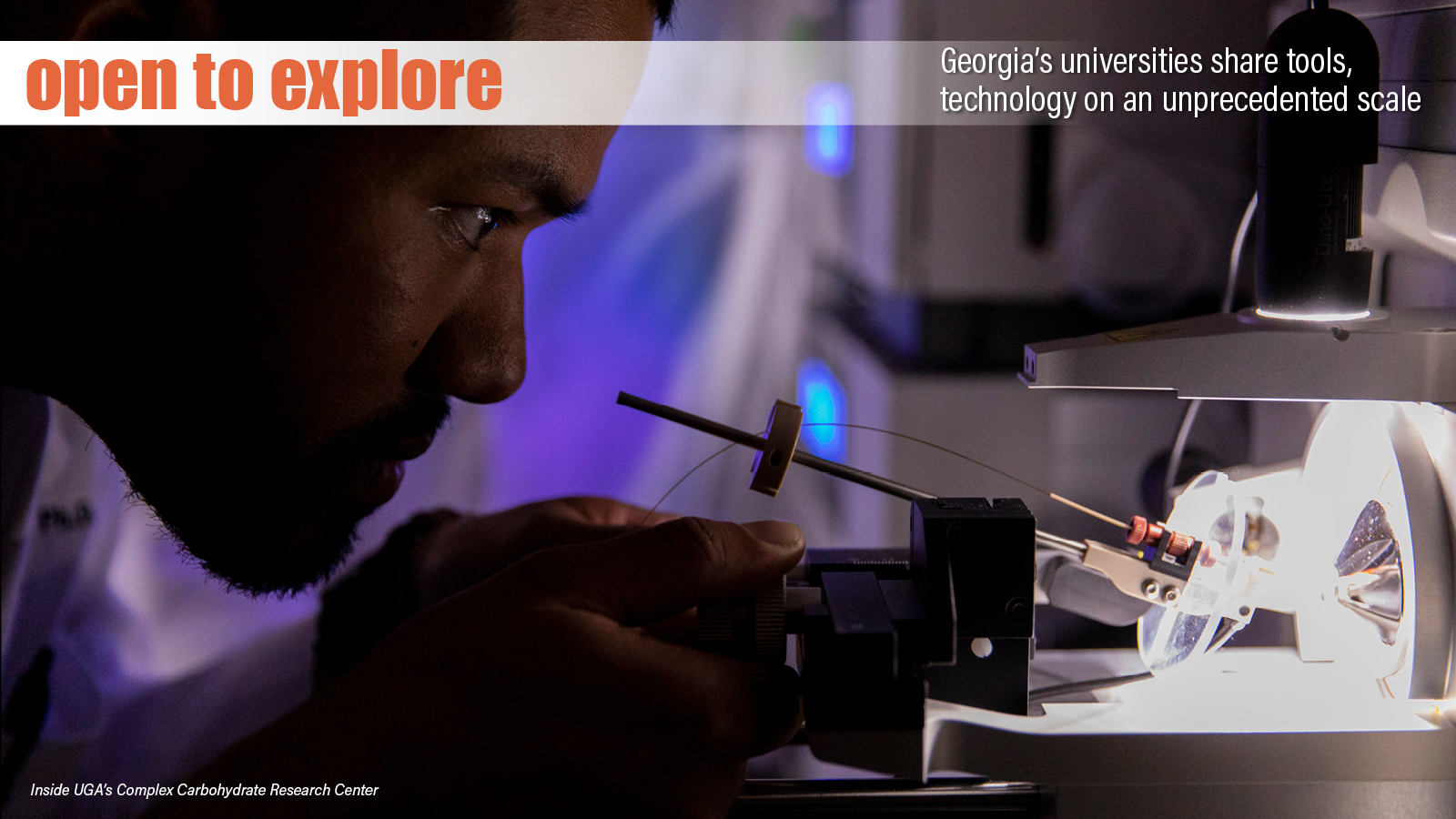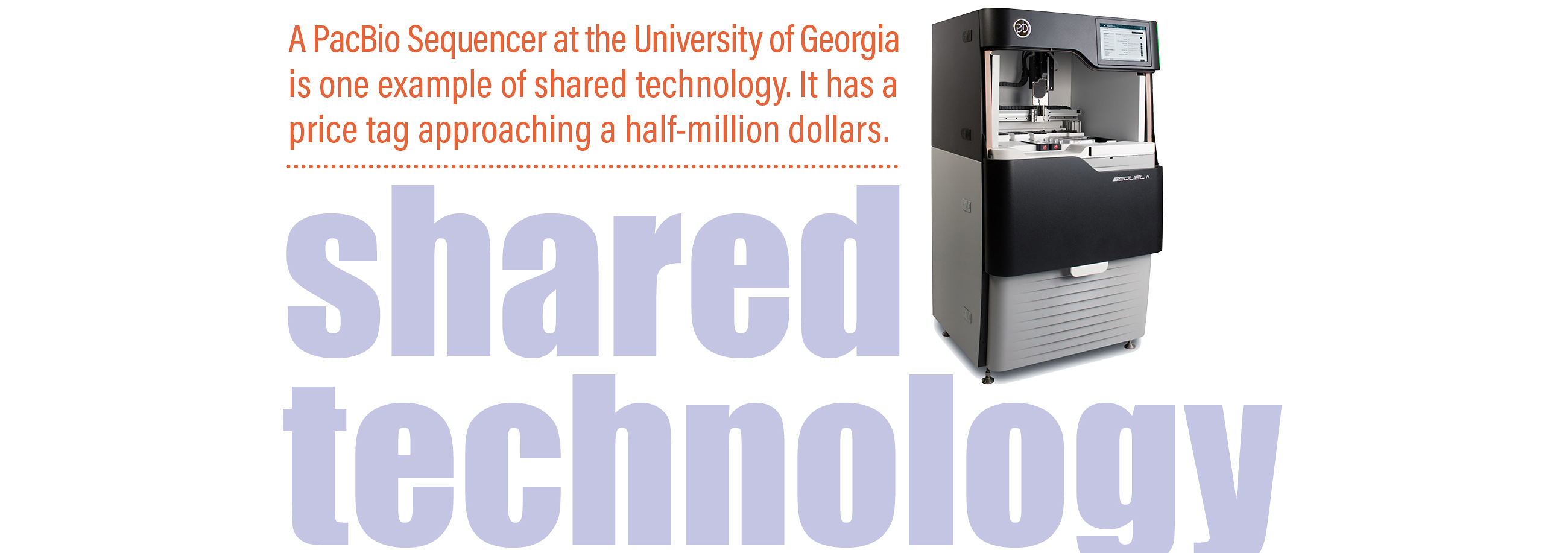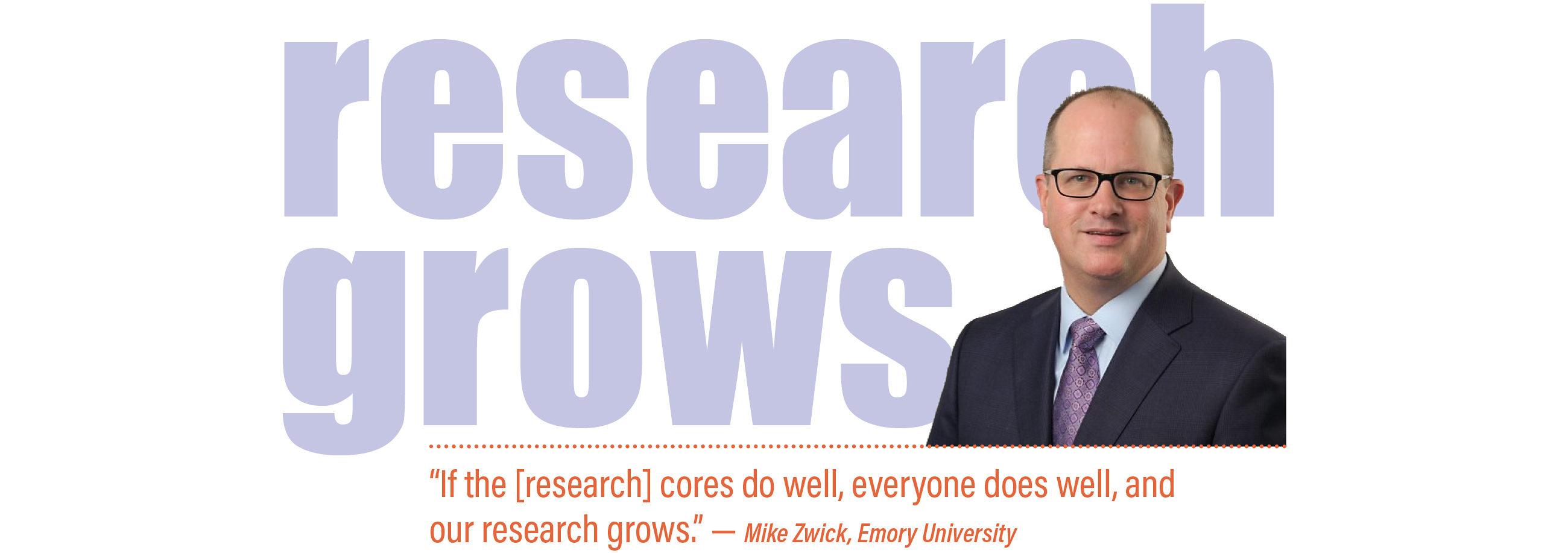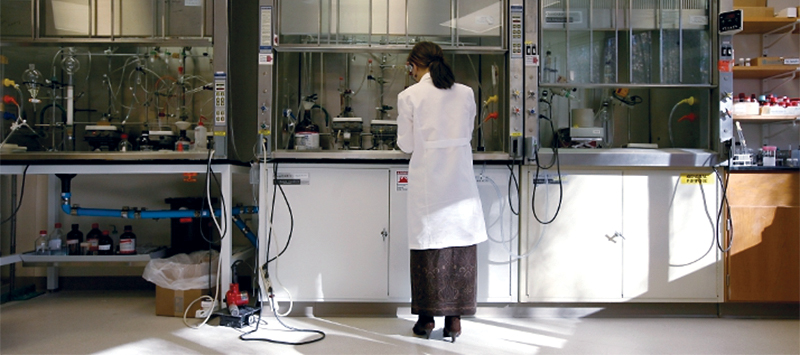

In 2018, eight universities signed an agreement that opened up mutual access to technology. Called the Georgia Core Facilities Partnership, the program enables university scientists to use a vast array of high-tech instruments housed in nearly 100 campus facilities across the state.
Four public institutions and four private universities participate in the partnership. See what core facilities are avaliable>
“In the U.S., you’ll find some arrangements between individual institutions, but they tend to be limited in access, research focus or number of participants,” says Michael Zwick, associate vice president for research in the Woodruff Health Sciences Center at Emory University. “But in Georgia, we have extraordinary cooperation among the nine universities participating in the partnership. And we’re excited that the Georgia Research Alliance has developed the GRA Core Exchange to make it easy for scientists to find and access facilities and equipment.

The memorandum of understanding (MOU) the universities signed exemplifies their cooperation. While expenses have to be covered, the institutions agreed to waive administrative overhead costs, a staple of such arrangements. And they collectively worked to minimize administrative barriers.
A PacBio Sequencer at the University of Georgia is just one example of shared technology. With a price tag approaching a half-million dollars, the machine allows researchers to advance their exploration of genetics by capturing a long sequence of information as a DNA molecule replicates.
“It’s the only one of its kind at a Georgia university,” Zwick says. “Emory contributed funds to help purchase the instrument. The UGA team operates and maintains the platform, but our investigators also get to use it, as do scientists at the other universities.”

Discussions between Emory and the University of Georgia were the impetus behind the exchange, according to Zwick. He recalls talking with Carl Bergmann, associate vice president for research at UGA, a few years back about sharing core facilities.
“We were both trying to overhaul the way we approached cores,” says Bergmann, “and we were in a similar position in what we were trying to do. So, it made a lot of sense to enter into an MOU.”
Zwick says they had plans to execute similar agreements with other universities, “but then we thought it would be most efficient to have a single MOU for all of us. I spent about a year figuring out who to contact and how to set it up.”
After the MOU was signed, GRA implemented the core exchange by creating a searchable online inventory of nearly 100 facilities. Scientists can quickly locate equipment and instruments, and the universities have the ability to easily update their capabilities.

“The Georgia State lab ran our reagent samples side-by-side with those from a commercial provider,” says Loren Williams, a professor of chemistry at Georgia Tech. “They did a massive amount of testing on it. Ultimately, we came up with one that worked just as well as the commercial test.” Williams adds that Georgia Tech plans to use the reagents in periodic campus testing this fall.
While such collaborations aren’t entirely new, the GRA Core Exchange opens up dialogue among scientists that will drive more to team up where it makes sense.
“Just having a Memorandum of Understanding in place is a success story,” says Georgia Tech’s Steve Woodard, assistant director of core facilities in the Petit Institute of Bioengineering and Bioscience. “Before, it would take an incredible amount of effort to execute Standard Service Agreements with our neighboring universities. Now, it’s an easy process.”
In shaping the exchange, Zwick was inspired in part by his quarter-century in the U.S. Navy as a surface warfare officer, where he worked his way up the officer ranks.
“On my ship, there were divisions and departments, and some competition,” he says. “But at the end of the day, the focus was on the mission we all shared. The same is true at our state’s public and private universities. If the cores do well, everyone does well, and our research grows.”
Collaboration will expand too, as exemplified by a COVID-19 related project involving Georgia Tech and Georgia State. GRA Eminent Scholar Julia Hilliard converted part of her lab into a facility that processes testing kits, and she and her team worked to test iterations of a chemical reagent invented at Georgia Tech.